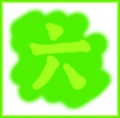This is the third (and likely final) installment of translations from the facebook notes of a Taiwanese exchange student in Beijing. Read my preface of sorts to these translations, here.
In this note, Yi-jung’s visit to the old Summer Palace prompts some thinking about history teaching in Taiwan and mainland China.
•
A trip to the old Summer Palace (2010.12.3.2010)
I took the subway today from Peking University station to Yuanmingyuan station, and the old Summer Palace was right there.* Before, I’d only seen a picture of the old Summer Palace in my middle school history textbook, but now there’s a subway station next to it. I couldn’t believe that a hundred years ago, British and French troops destroyed this place, and maybe a lot of people died here. Even more difficult to imagine was that Qing dynasty emperors, eunuchs, concubines and courtiers had also walked on this land. This feeling is difficult to describe. At any rate, these people hadn’t gone to Taiwan.
Walking through the ruins of the European buildings, I saw lots of Western style architecture, but what I saw wasn’t authentic, but rather a simulated rebuilding. Then I walked into a maze. It was difficult to understand why so much effort was spent to build a maze like this, I really don’t know what the people of the time were thinking. According to my limited memory of history, the political situation of that time was chaotic, and the state of affairs worldwide had changed, but there were still people [i.e. the imperial court] who didn’t realise how explosive the times were.
Beijing is a city with a heavy history. However, I feel that these historical sites aren’t so important to the locals here, maybe [having them around is] as natural as breathing for them? I don’t understand why the history my middle school taught included mainland Chinese history in our national history**. If I was taught another version of history, maybe the meaning of this place to me would have decreased immensely.
•
去圓明園 2010-03-12
今天從北大æ±é–€åœ°éµç«™æ到了圓明園站出站後,就到了圓明園。以å‰åªæœ‰åœ¨åœ‹ä¸æ·å²èª²æœ¬çœ‹åˆ°åœ“明園的照片,ç¾åœ¨åœ“明園æ—就有了地éµç«™ã€‚我更難想åƒä¸€ç™¾å¤šå¹´å‰è‹±æ³•è¯è»ç ´å£žåœ“明園那副景象,å¯èƒ½é‚„有很多人æ»åœ¨é€™å…’ï¼æ›´é›£æƒ³åƒä»¥å‰æ¸…æœçš„皇å¸ã€å¤ªç›£ã€å¦ƒåã€å¤§è‡£ä¹Ÿæ›¾ç¶“走在這塊土地上,這種感覺,真的很難形容。至少,這些人是ä¸æœƒèµ°éŽå°ç£é‚£å¡ŠåœŸåœ°ä¸Šçš„。
走進了西洋樓éºå€ï¼Œçœ‹åˆ°è¨±å¤šè¥¿æ´‹çš„å»ºç¯‰é¢¨æ ¼ï¼Œä¸éŽçœ‹åˆ°çš„也ä¸æ˜¯çœŸè·¡ï¼Œæ˜¯ä¹‹å¾Œä»¿çœŸè·¡æ‰€å¾©å¥çš„。然後走到一個迷宮,很難ç†è§£ç‚ºä»€éº¼è¦èŠ±äº†é€™éº¼å¤šå·¥å¤«ï¼Œè¨è¨ˆäº†é€™æ¨£ä¸€å€‹çœŸäººè¿·å®®ï¼ŒçœŸä¸çŸ¥é“那時候的人在想什麼?據我有é™çš„æ·å²è¨˜æ†¶ï¼Œé‚£æ™‚候時局很亂,世界局勢改變,當時還是有人éŽè‘—ä¸é£Ÿäººé–“ç…™ç«çš„æ—¥å啊。
北京是個有著沉é‡æ·å²çš„城市。ä¸éŽé€™äº›æ·å²å¤è¹Ÿæ„Ÿè¦ºå¥½åƒä¹Ÿä¸æ˜¯é‚£éº¼å‚™å—這裡的人民é‡è¦–,å¯èƒ½å°±è·Ÿç©ºæ°£ä¸€æ¨£è‡ªç„¶å§ã€‚ä¸çŸ¥é“以å‰åœ‹ä¸æ·å²ç‚ºä»€éº¼æœ¬åœ‹æ·å²æœƒåŒ…å«ä¸åœ‹æ·å²ï¼Œå¦‚果我接å—的是å¦å¤–一套æ·å²æ•™æ,å¯èƒ½é€™å€‹åœ°æ–¹å°æˆ‘çš„æ„義,就會減少許多å§ã€‚
___
* ‘Yuanmingyuan’ is the Chinese name for the old Summer Palace. The Chinese means ‘garden of the full moon’ (correct me if I’ve got this wrong, readers).
** For ‘national history’, Yi-jung uses 本國æ·å², referring to the Republic of China (ä¸åŽæ°‘国) as her perspective is Taiwanese. The term I’ve translated (wrongly, but it helps to make the meaning clearer) as ‘mainland Chinese history’ is ä¸åœ‹æ·å², literally ‘Chinese history’. In her clarification email when I asked about these terms, Yi-jung writes that this term includes æ·ªé™·çš„å¤§é™¸åœ°å€ – ‘mainland [China] which fell into enemy hands’ (no kidding). All this give me a big headache, as it does Yi-jung. “I think that [本国] and [ä¸å›½] aren’t unequivocal terms”, she writes, “I’m not even clear about them myself. It’s an extremely complicated problem.” You got that right.
-
Pingback from Six · Diary of a Taiwanese in Beijing on June 1, 2010 at 8:17 pm
Comments are now closed.


4 comments